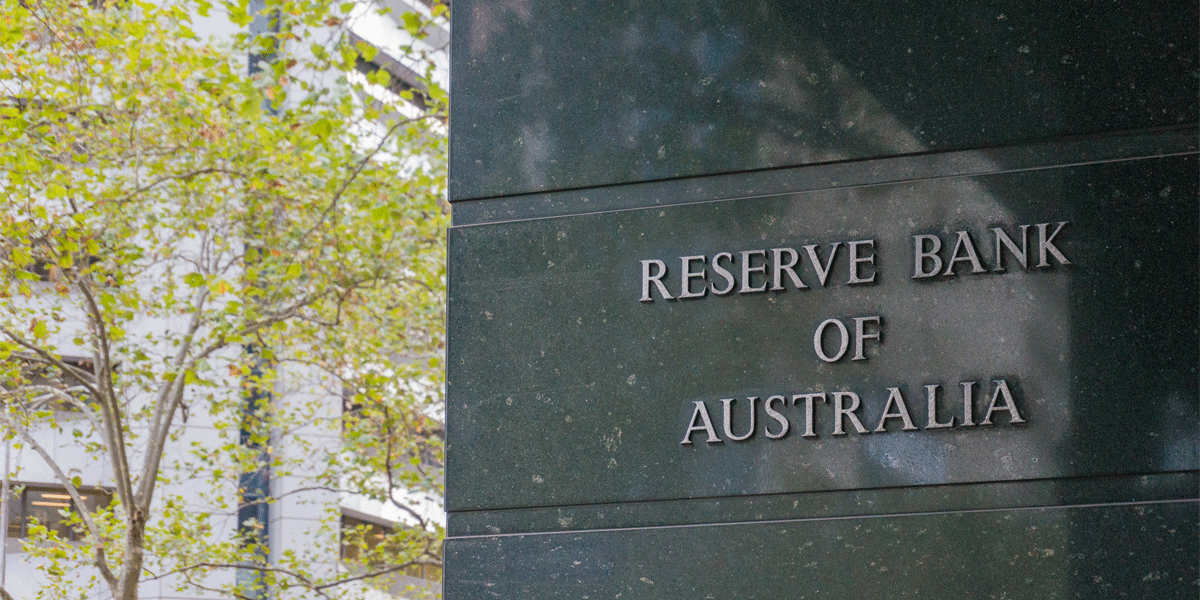Download the PDF

Where are rates headed?
Tuesday’s decision to keep the official cash rate on hold came as a surprise to markets and most commentators, including QIC. In explaining their decision, Governor Bullock emphasised the importance of the quarterly CPI data in confirming the ongoing moderation of inflation. The Governor indicated if the June quarter data (to be released at the end of July) were in line with the RBA’s outlook, then an August rate cut is very likely. We, like the market and other commentators, had anticipated the slowing trend in inflation shown by the more timely monthly CPI series would be enough for the RBA to cut rates at this week’s meeting.
The RBA took a more conservative approach, opting to wait for the more stable quarterly CPI series to confirm the ongoing slowdown in inflation rather than relying on the still somewhat experimental monthly series. Our outlook is that the June quarter trimmed mean CPI outturn will slow to an annual rate of 2.7%, which is broadly in line with the RBA’s latest forecasts of 2.6%.
Both ours and the RBA's forecasts indicate a slowing in the underlying rate of inflation from the March quarter outturn of 2.9%, which should be enough to induce an August rate cut.
Looking ahead further, if the RBA sticks to its emphasis on the quarterly inflation numbers, which seems to be its preferred course of action, the next cut will follow at its November meeting coming after the release of the September quarter CPI numbers.
By then, we expect underlying inflation to have slowed to the RBA’s target of 2.5%, again, in line with the RBA’s forecast of an annual rate of 2.6%. With underlying inflation at target and an economic recovery continuing to gather pace, our view is that the RBA will then pause throughout the first half of 2026. Beyond the first half of 2026, with underlying inflation well anchored at the RBA’s target of 2.5%, policy emphasis will swing back to economic growth and employment. If, as we and the RBA anticipate, an economic recovery is well entrenched and the labour market has not eased excessively (meaning the unemployment rate has not increased beyond 4.5%), the Bank can continue to remain on hold into the September quarter of 2026.
However, monetary policy will become more interesting later in 2026 as the RBA then needs to decide if a rate of 3.35% (which is where the cash rate will have settled if, as we expect, the RBA delivers two further 25 basis point (bp) rate cuts before pausing) is too stimulatory for an economy at full employment and at trend growth, or whether that rate is just right. The rate which is “just right” (otherwise known as the neutral rate or r*) for an economy in equilibrium (i.e., inflation at 2.5%, the unemployment rate at 4.5% and economic growth at around 2.3%) is a hugely uncertain, and hence oft debated, level. What we do know is that in the post-Covid world of higher inflation, the estimate of r* by the US Federal Reserve (Fed) has been climbing. At their December 2019 meeting (just prior to the outbreak of Covid), the Fed estimated that the US r* was 2.5%. Fast forward to 2025 and the Fed’s latest estimate, released in June, is now 3.0%. This is not surprising given the difficulty the Fed and other central banks had in convincing markets that they could achieve their inflation targets. But unlike the post-Covid world, where central banks have had difficulty convincing markets they could lower the rate of inflation to their target, in the pre-Covid world they had trouble convincing markets they could lift inflation to their target.
An expression of the confidence markets have in a central bank’s ability to keep inflation at target is the so-called 10-year Break Even Inflation rate (BEI). This is the average rate of inflation priced by the market over a ten year forward horizon. If the rate is greater, or lower, than the central bank’s target (in the case of the Fed and the RBA, a rate of around 2.3%-2.5% CPI inflation), then markets are signalling a lack of confidence that the central bank can stabilise the inflation at target and that the central bank should raise/lower interest rates.
If BEIs fall out of alignment with the central bank’s target for an extended period (as it did in the decade post the GFC and pre Covid) it can cause the central bank to lower its estimate of r* as it fights to raise market expectations of the BEI. This is indeed what happened to most central banks in that pre-Covid decade. The Fed is interesting, because they regularly report their estimate of r*. Over 2019, their estimate was around 2.5% when the BEI averaged around 1.75%, significantly lower than its CPI-consistent target of around 2.5%.
But now, the BEI has climbed back to be close to the Fed’s target and is sitting at 2.4%, and has been relatively stable at that level for the last three years. Consequently, the Fed have lifted their value of r* a full 50bps to 3.0%. This means that when the US economy finally settles back to full employment and trend growth, the fed funds rate will settle at 3.0% rather than 2.5% (as implied by the lower pre-Covid r* estimate) given that the BEI is now at target. Compare this to the Australian case. Over the pre-Covid decade, the RBA estimated Australia’s r* to be 3.5%. The higher r* measure in Australian compared to the US is partly attributable to Australia’s higher economic growth rate over the pre-Covid decade compared to the US, and to a less dynamic approach to adjusting their estimates of r*.
However, in the May Statement of Monetary Policy, the RBA’s average r* estimate across a range of models was around 3.0%. This has led many commentators to assume that this is the Bank’s operational estimate. But Governor Bullock has been cautious in confirming explicit measures of r* and has identified other indicators as important including credit growth, which has been picking up. At QIC, we agree with the Fed that r* estimates have risen post-Covid rather than fallen and we estimate that Australia’s r* is closer to 3.75% than 3.0%. If we are correct, and inflation pressures build later in 2026 with an interest rate at 3.35%, we will see the RBA needing to raise rates in the December quarter of 2026.

